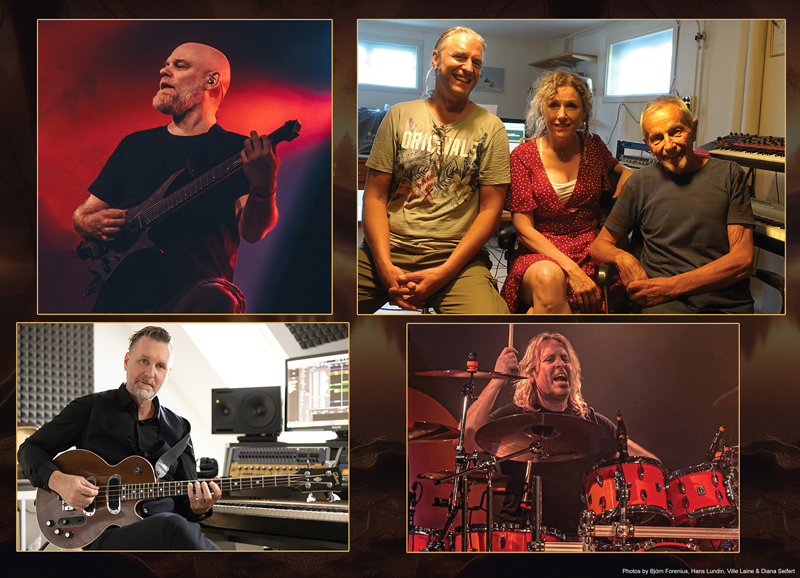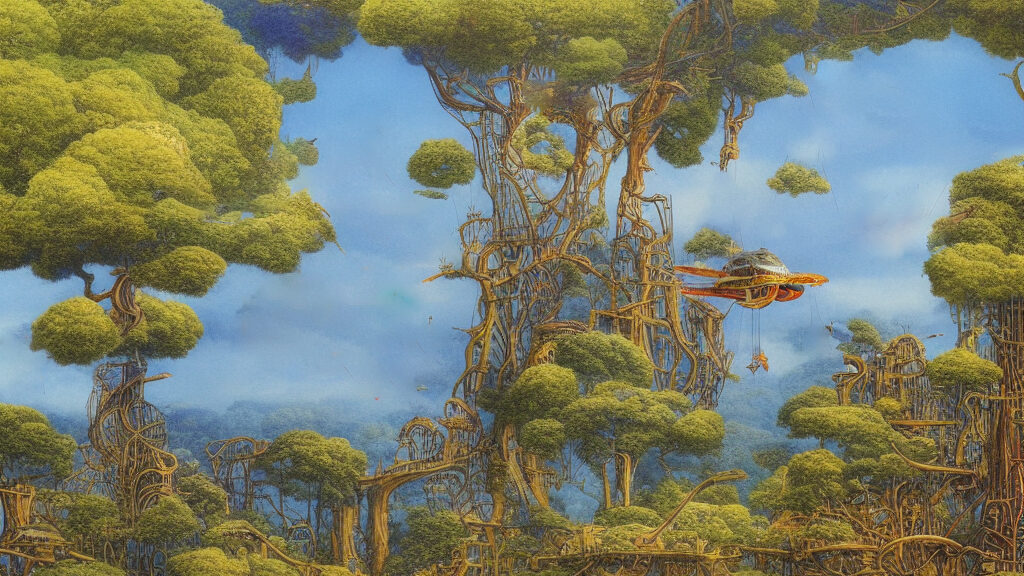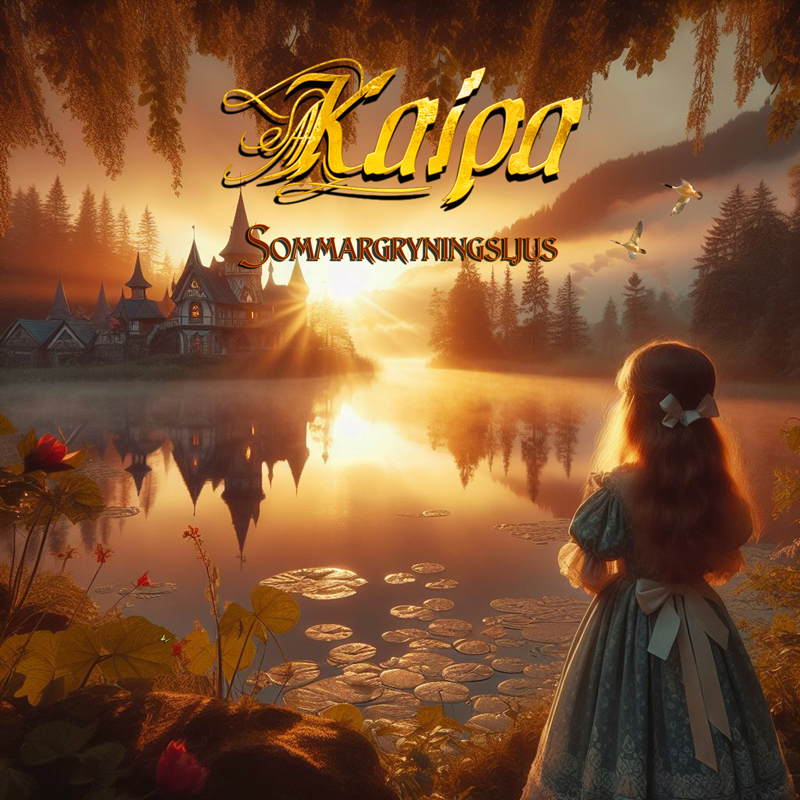Kaipa – Sommargryningsljus (InsideOutMusic, 2024)
Stellar Swedish progressive rock band Kaipa returns with their 15th studio album, Sommargryningsljus (Summer Dawn Light), a masterwork scheduled for release June 28th 2024. Now, 60 years into his career, bandleader Hans Lundin and his current bandmates, Per Nilsson, Jonas Reingold, Darby Todd, Patrik Lundström, and Aleena Gibson are making some of the finest progressive rock coming out of Northern Europe
The key to Kaipa’s success lies in Hans Lundin’s exceptional talent as a keyboard virtuoso, arranger, and composer. His keen eye for recruiting new talent further bolsters the band’s strength. Notably, the group features the exquisite vocals of Aleena Gibson, undoubtedly one of the best singers in the current progressive rock scene.
Lundin, a master of symphonic progressive rock infused with Swedish folk influences, consistently delivers masterful keyboard orchestrations and memorable synth solos. Additionally, Sommargryningsljus features spectacular, epic guitar work by Per Nilsson. Meanwhile, Aleena Gibson not only exhibits her talent as a lead vocalist but also provides fantastic backing vocals, enriching the band’s sound.
The rhythm section is equally spectacular, featuring dazzling ensemble work characterized by creative drumming and bass. Moreover, the solid interplay among the musicians adds depth and dynamism to Kaipa’s overall performance.
Sommargryningsljus contains eight tracks, portraying a nocturnal cycle from dusk until dawn. The first two tracks represent twilight, and the closing two signify dawn. This nighttime portrait can be seen as a metaphor for the state between death and rebirth, or as an allegory of life told in reverse.
Although most of the vocals are in English, the title songs features stirring vocals in Swedish. Lund says: “I had written all the songs for the album and the total playing time was 70 minutes, but then something unexpected happened. One day, when I was recording with Aleena Gibson, we took a break and went out into my garden to have a cup of coffee. Suddenly Aleena started singing some notes and I said it was beautiful. ‘Okay, let’s write a song‘, she said. So we returned to the studio and 15 minutes later a new song had been born. We were both delighted with the result and said that this song must be on the album and the lyrics must be in Swedish. I developed the song and created an interlude built on the same chords. The melody was hovering around in the studio, and it landed gracefully in my fingers when I started to play. One early morning a few weeks later, the words suddenly came floating down and landed in my consciousness.“
“A whispering dawn the sun’s on its way to open up a brand-new day out of the shadows of the night” is the opening phrase of the song “Songs in Our Hands.” The dawn theme has always been close to Hans Lundin’s heart in his songwriting. On the self-titled debut album, released in 1975, he explored this theme in the song “Se var morgon gry.” He revisited this theme in the songs “Dagens port” and “Visa i sommaren” on subsequent albums. With the new album, he closes the circle and returns to where it all began.
The epic ”Revelationview” is the most folk rooted track on the album. Lundin comments: “The most folk music-inspired song on the new Kaipa album Sommargryningsljus, with both violin and whistles. Once in a lifetime, or for some, maybe several times, you encounter that magical moment when time is out of sight, and you are just amazed by what you experience. I have chosen to call this “Revelationview”. This is a song about this experience.”
The basic structures of two songs on the album, “Seven Birds” and “Spiderweb Train,” were originally written in the late 1990s, the same period as the songs for Kaipa’s comeback album Notes from the Past (2002).
Hans Lundin provides details: “I found two old long instrumental songs that I really liked. I only had the songs mixed on a cassette tape. At the time when they were recorded, I used an Atari computer and the Logic program Notator where I could record MIDI files addressed to all my different keyboards. The songs were saved on a floppy disc. I managed to transfer these MIDI files into my modern recording system, and slowly I could build up these old songs again. I had to dust off a couple of old synthesizers that had not been used for many years to find some of the original sounds I used at that time. I edited the songs, removed some parts, and wrote some new bridges. I also decided to use some of the instrumental melodies as vocal tracks and wrote lyrics. One of the songs was called “Seven Birds” and it inspired me to write lyrics where I could keep the title intact. Some of the synthesizer solos on these tracks are actually recorded in the 90’s. Working with these songs was really fun and inspiring, and I felt I was building a bridge between the past and the future, the old and the new. This is the 10th Kaipa album on Inside Out and I think it’s logical to celebrate this with two songs that are like a melting pot, born some 25 years ago and dressed up for success today.”
Hans Lundin’s musical career began in the summer of 1964 when he joined his first band as an organist and singer. He reflects on those early years as “the best education I could ever get.” Nine years later, in 1973, he formed the group Kaipa.
Musicians: Hans Lundin on keyboards, vocals; Per Nilsson on guitars; Jonas Reingold on bass; Darby Todd on drums; Patrik Lundström on vocals; Aleena Gibson on vocals.

Special guests: Elin Rubinsztein on violin; Fredrik Lindqvist on recorders & whistles; and Olof Åslund on saxophone.
Buy Sommargryningsljus.

